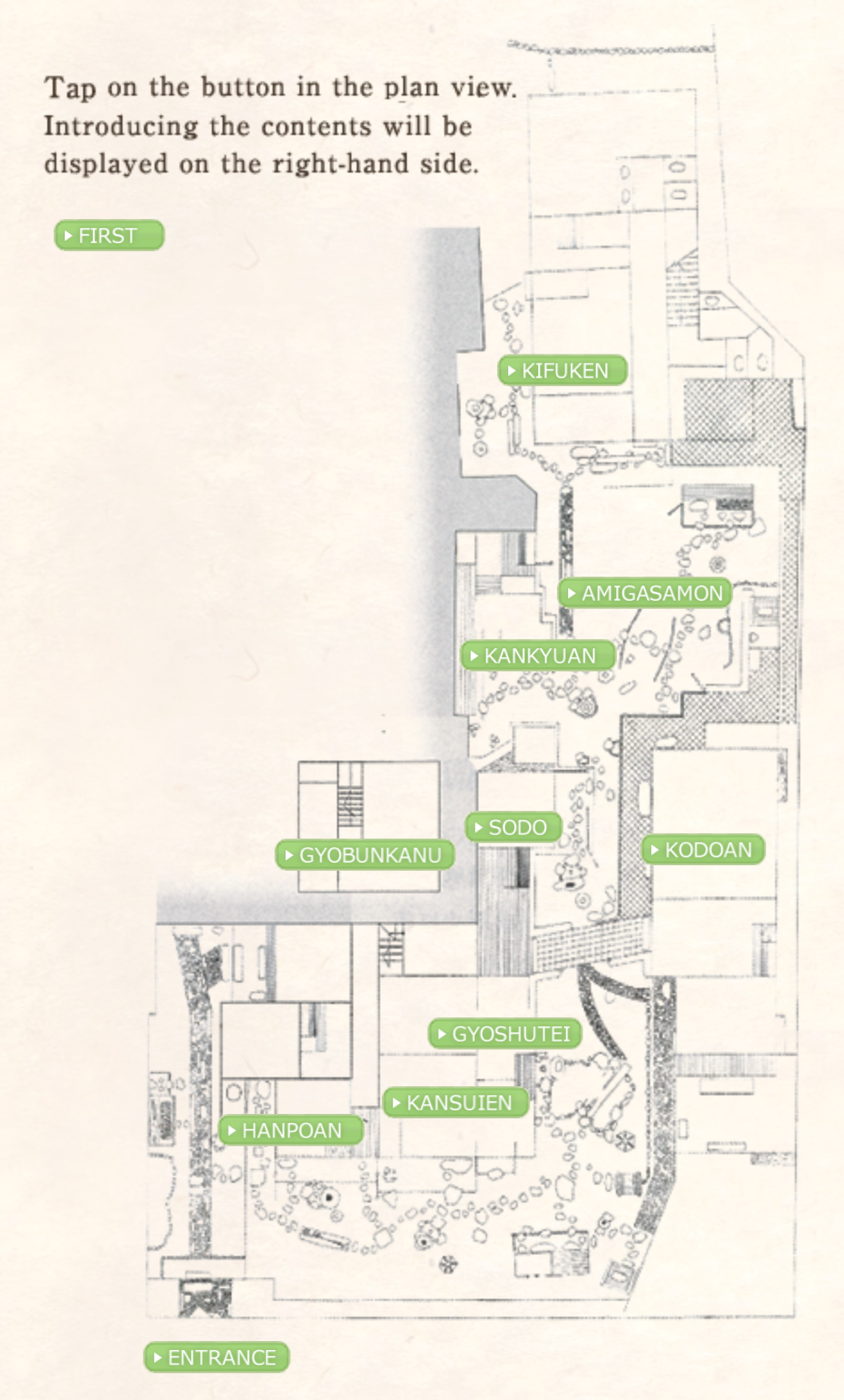

The present complex of buildings and garden known as the Kankyuan occupies a large parcel of land in north central Kyoto. The front of the lot, measuring 26.4 meters across, faces Mushakoji Street. There are two entrance gates. The depth of the lot from north to south is 52.2 meters.
A path winds along the southern edge of the Hanpoan and the Kansuien.It turns north at the southeast corner of the Kansuien and leads to theAmigasamon. The Amigasamon, which is the middle gate leading to the Kankyuan, is located just a short distance north of the Kodoan.
Each tea room, with the exception of the Gyoshutei, has a garden entrance onto this path. Near each entrance are the requisite stone lantern and hand washing basin. Small covered waiting pavilions are located in the northeast and southeast corners of the garden.
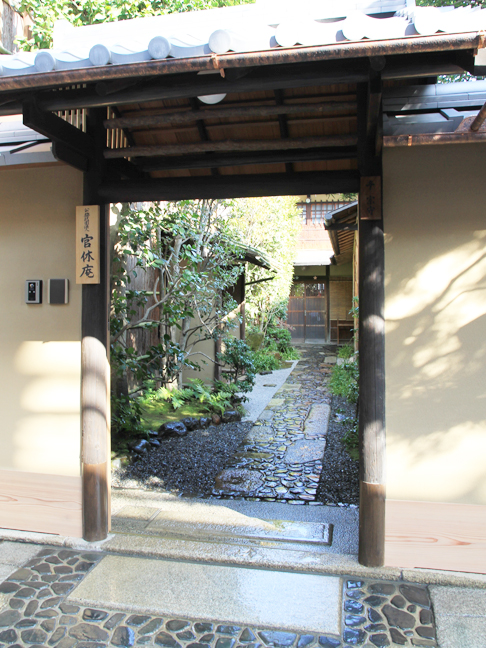
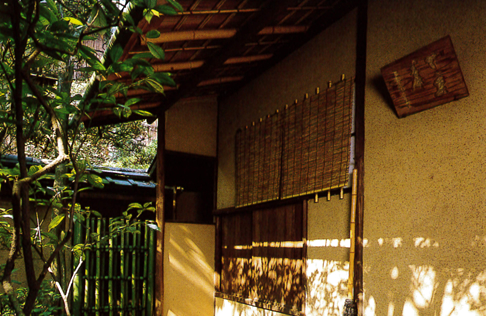 Hanpoan appearance
Hanpoan appearance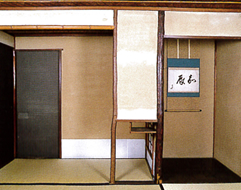 Alcove and host’s place of Hanpoan
Alcove and host’s place of Hanpoan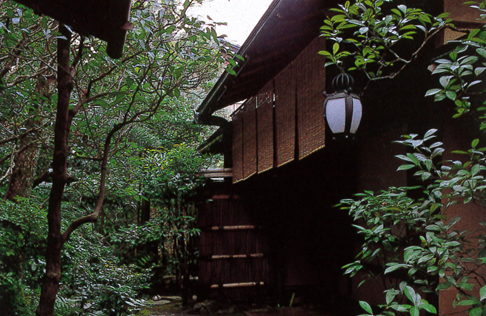 Garden leading to Kansuien
Garden leading to Kansuien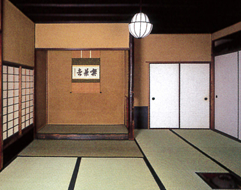 Alcove and host's entrance of Kansuien
Alcove and host's entrance of Kansuien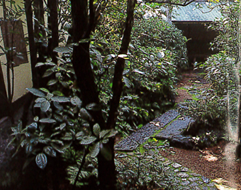 Eastern garden of Kansuien
Eastern garden of Kansuien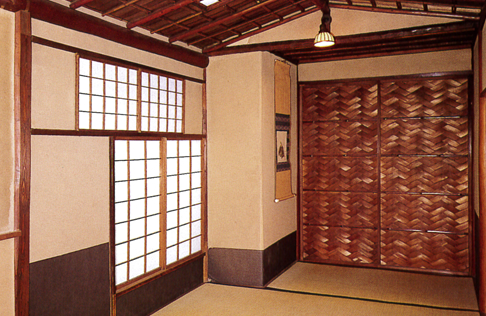 Interior of Gyoshutei
Interior of Gyoshutei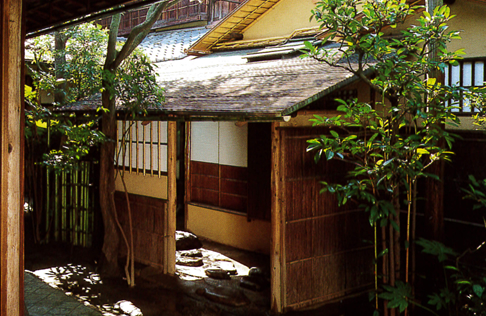 Sodo appearance
Sodo appearance Alcove and Rikyu sculpture with circular window of Sodo
Alcove and Rikyu sculpture with circular window of Sodo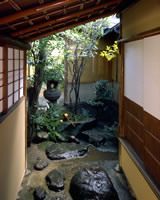
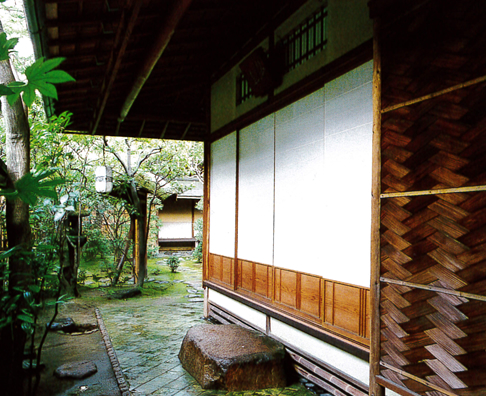 Garden leading to Kodoan
Garden leading to Kodoan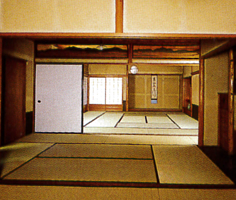 Interior of Kodoan
Interior of Kodoan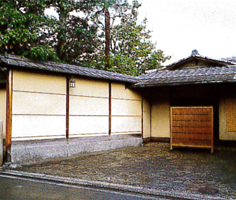 Entrance gate in front of Kodoan
Entrance gate in front of Kodoan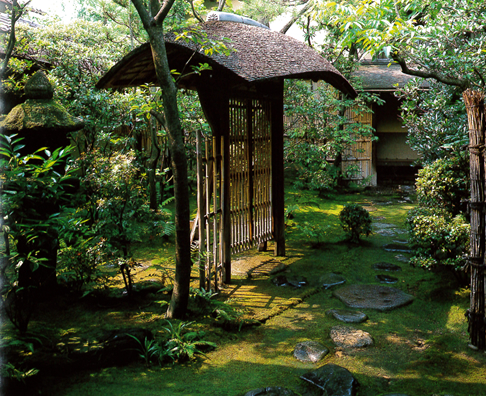
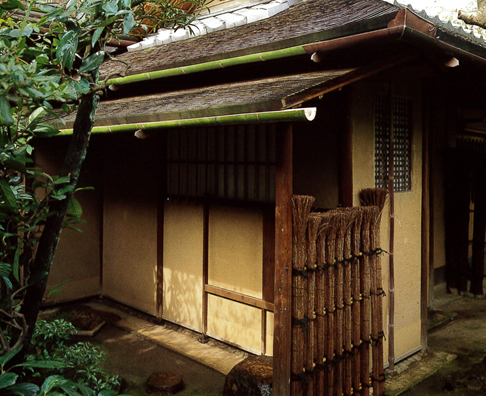 Kankyuan appearance
Kankyuan appearance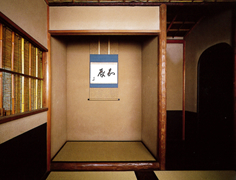 Alcove and host's entrance of Kankyuan
Alcove and host's entrance of Kankyuan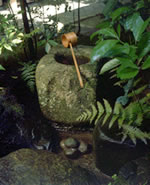
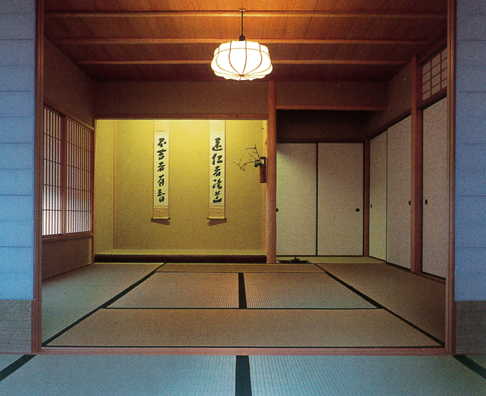 First floor tea room
First floor tea room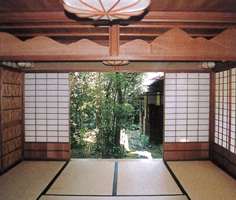
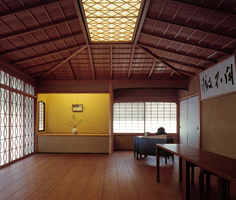 Second floor tea room
Second floor tea room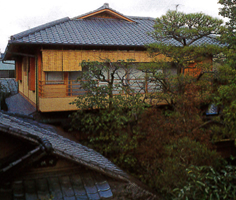 Kifuken appearance
Kifuken appearance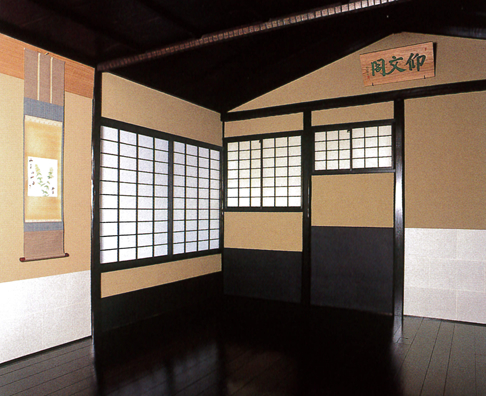 Interior of Gyobunkaku
Interior of Gyobunkaku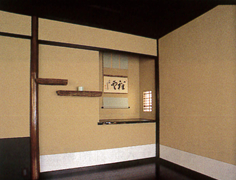 Alcove of Gyobunkaku
Alcove of Gyobunkaku












